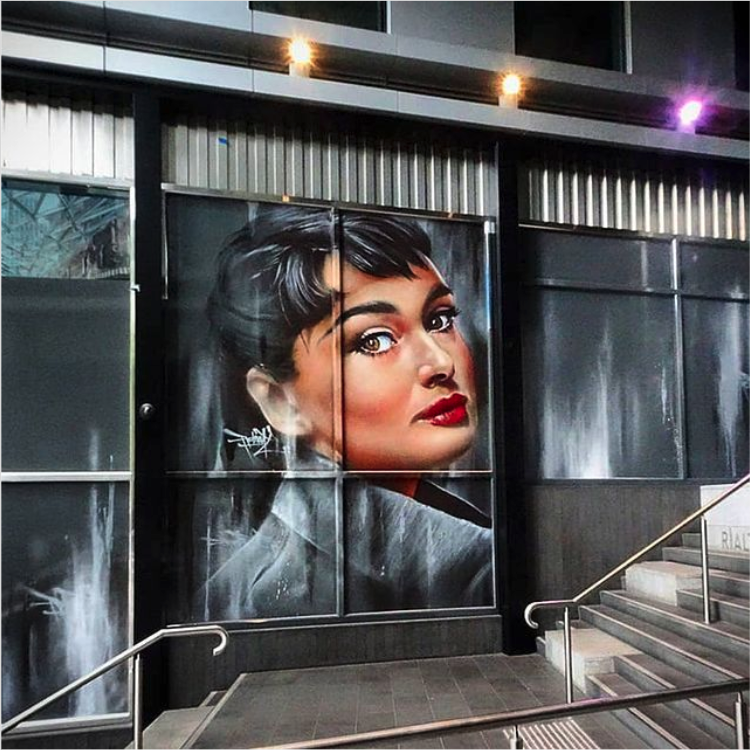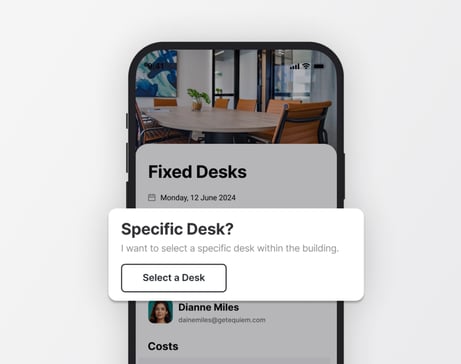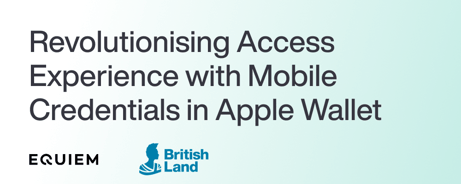Commercial owners and property managers in the US and UK are now looking for ways to bring tenants back to the workplace. Although this post discusses "first" impressions, we recognise that you are planning outreach to customers who already know you and your brand.
Despite this, our use of "first: is no mistake. Employees coming back to the office have changed. You have too. Therefore, this is a chance to create new first impressions, to start fresh.
Let's look at the psychology of basic human interactions. Research suggests that people form first impressions about a brand within seconds, seven at the most. These impressions help people to determine whether the brand is trustworthy, competent, and valuable. The first impression is then nurtured over a short-term period with subsequent interactions. "It takes between 5-7 impressions," Tailor Brands writes, "to start creating brand awareness."
"Consistency is everything."
Read also: How will the role of commercial property manager change in the future?
It's a science-backed truism that first impressions are very difficult, if not impossible, to change once they are formed. This means that your welcome back strategy must be efficient, targeted, holistic, and consistent.
For commercial real estate property managers, your brand is your building. That brand is a representation of the services and amenities you offer, the quality of your customer service, and the overall quality and functionality of your spaces. And, in the future, the strength of your brand will be determined by the flexibility you offer customers — consequently, the price and terms of long leases will become less and less of a factor.
Consider the words of Dror Poleg, commercial real estate expert and author of Rethinking Real Estate.
"You have to adapt your product to a very specific type of customer, and go all-in on them," Poleg says. "The people at the top will be those that have a brand, that have their own distribution, that resonate with their customers, that have some sort of relationships that mean something."
A Good Welcome Back First Impression
Consider two possible approaches.
Journey A is the path you might take without prior knowledge or planning about the changing wants and needs of your customers. You meet with a tenant representative of a company, and hand them a well-designed package. Perhaps it contains a revised tenant handbook, full of information on COVID-safe building procedures, a handful of coupons to redeem with onsite retailers, and some branded mouse pads.
You make a plan for a follow-up chat, shake hands, and part ways. After this initial period, if needed, they must call or email you to discuss any issues they have with their office, their lease, or any questions they have about the materials you have provided. Ultimately, any interaction requires a significant investment of time and effort from both parties — and delays are an avoidable side effect.
Here's the problem: In doing things the old-fashioned way, you might fail to capture useful insights on the wants and sentiments of returning customers. Their returning impression might be that you are detached, or unaware of their changing needs for space.
Journey B is what we call the next-generation welcome.
You meet with the tenant representative, just like in Journey A. But instead of tossing an old-school glossy folder in their lap, you show off your tenant experience platform on a big projector screen.
You say: "We're so excited to have you back. To make the most of your experience here, we've housed all of the information you need to know in a special section of your platform. You can search, easily navigate the content categories, and reach out directly to us within moments. We run weekly polls, too, so we can ensure we are meeting your needs for services and amenities.
"We know that your needs for space may have changed, so while we set up an appointment to discuss the deployment of your workforce, you can book flexible space directly through the platform. If you decide to scale back, this same platform can accommodate your needs on an ad hoc basis.
"That's not all," you continue. "We've set up a dedicated campaign exclusively for your company. It includes free coffee vouchers, an onboarding competition, and a few other goodies. Have fun!"
It is clear to see which journey will generate a more favourable first impression of your brand. From there, tenants are easily made into advocates. They see that the tangible quality of your office — the services and amenities — is congruent with its online equivalent. A community as welcoming as this is difficult to leave.
How to create an unforgettable experience in your building lobby
Just as the entryway of your home sets the impression of your house, the lobby or foyer of your building gives customers and visitors an instant showcase of your services and amenities. A thriving lobby is the first step in fostering a thriving building community. It is the place where people meet, chat, laugh, and take their breaks. It is the place where final handshakes secure deals. It is the polar opposite to the lonesome home office.

-
Start with signage.
Fill the space, including entry and exit points, with signs and placards welcoming customers back. These signs — be they A0-sized boards, massive banners, brochures, or A4 hand-outs — are an invaluable marketing tool. You can advertise events, new services (such as fitness classes), new amenities (such as a refurbished gym), retailer specials, and much more. If you have a tenant experience platform, physical signage is an effective way to encourage registrations. Every Equiem platform launch is supported by beautiful signage. -
Consider digital screens.
For many owners, digital screens are a more cost-effective way of communicating with customers. Create a series of welcome-back assets and play them on a loop wherever you can — at the reception desk, in elevators, even in common areas. Don't have any screens installed at your building? Consider buying or hiring portable screens to promote the bigger events in your welcome back campaign. The investment will pay for itself. -
Create a pleasant scent.
Really? Yes. According to Shopify, scent marketing is an effective way to create the right atmosphere for your lobby space. "Human physiology and psychology place great importance on the sense, and link it quickly and deeply to positive memories, so we can repeat those experiences." Combined with lighting, music, art, and other factors, scent creates an "immersive brand experience" for customers.
Here's a fun exercise for your team: What scent best represents your brand? Maybe it's something luxurious, like bergamot; or perhaps it is something fresh and bright, like clean linen. Whatever the scent of your brand, a simple diffuser (or two) is all it takes to round out the atmosphere of your lobby area. -
Fill your space with music.
Studies show that when humans experience music together, either by listening to or producing it, general cooperation increases. Of course, cooperation and community go hand-in-hand. Benefits to world peace aside, the right music, just like the right scent, creates an appealing atmosphere for your lobby — as well as an unforgettable first impression. Jazz, lounge, and bossa music are proven to work well for hotel lobbies. To maximise the effects of your lobby soundscape, consider hiring live musicians to play regular lunchtime shows for customers. -
Ante up with art.
Neurobiology research suggests that looking at art can produce the same psychological effect as the experience of love. So fill your lobby with a calming, loving atmosphere. Creating an evergreen installation is a great way to showcase the work of local artists, too. Need inspiration? Here's one we organised with the property management team at the Rialto in Melbourne, Australia. -
Deploy a temporary concierge team.
Technology is the next frontier in commercial real estate. A tenant experience platform is a must-have. But don't forget about true, in-person customer service. Concierge services contribute value, convenience, and an air of prestige to your building lobby. Concierges are experts in hospitality and customer service. They can welcome and direct customers and visitors, give tips on local sights and restaurants, and help you manage day-to-day building operations. Consider hiring a crack team of concierge professionals when you put on an unforgettable return-to-workplace event.



